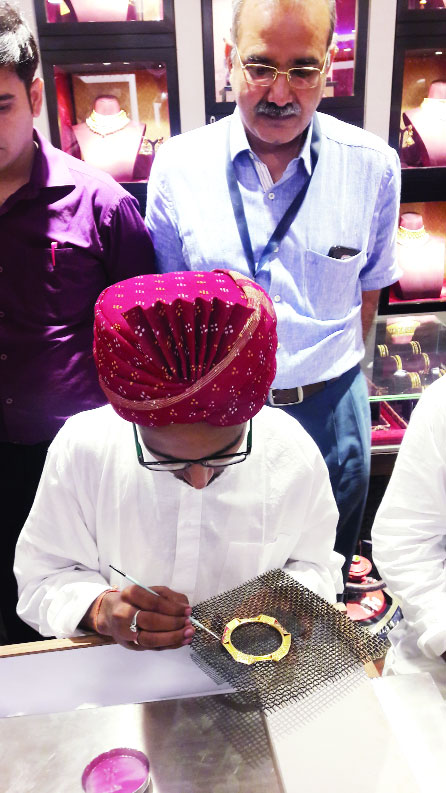In a live demonstration in the Capital, meenakari experts show SHALINI SAKSENA how they painstakingly fill different enamel colours in a gold bangle to bring out the best craftsmanship
The word meenakari is derived from Meena, or Minoo — the feminine form in Persian — which means heaven. The art form came to India with the Mughals. Evidence has it that the work was done to adorn the palace walls before it finds its way into jewellery and since then there has been no turning back. The designs just got more and more intricate and the art form just got better and better with artists filling in more than one colour in the jewellery.
It is this craftsmanship that was recently showcased in the Capital to show commitment towards differentiated design, superior quality and exquisite designs that was inspired by the age old chudiwallah concept. The idea was to recreate the look and feel of the traditional haat where everyone would come together and enjoy the old world charm.
Sandeep Kulhalli, senior VP, Retail and Marketing, Tanishq tells you that they have always been very conscious of their design philosophy. “It has been our constant endeavour to offer our customers with jewellery that matches their unique sensibilities and have curated collections accordingly. The karigar workshop was our way to narrate our commitment to design through an immersive experience. We wanted to build an event that will help our customers are able to experience first hand the hard work and precision that goes into every ornament that they adorn. The response we received from them has been phenomenal and we are looking forward to creating more such interventions.â€
The whole process of a gold bangle starts by ensuring the purity of the metal itself. One is told that the first step is to remove all nickel traces to prevent skin poisoning. Then the metal is moulded into strips and cut into the desired size.
Various tools are used to crave the design; sometimes this is done by hand and sometimes they use tools to embossed it by using a metal stylus. From here on, the designing becomes intricate.
Before the meena is applied, the meenakar grinds the enamel stone into powder and mixes with a glue to get a watery paint like solution. With an extremely thick brush, he then applied this in the required areas. There are various colours. Yellow is obtained by using chromate of potash, violet is obtained through carbonate of manganese, green through copper oxide, blue through cobalt oxide, brown through red oxide, and black through manganese, iron, and cobalt.
If more than one colour has to be applied, the fill will be as per the hardness, with the hardest first. But before each fill, a blowtorch is used to fuse the powder enamel together. The blowtorch itself has a temperature regulator. This is what gives the meena its final colour. For example, the pink enamel gives a deep red hue.
Once all the colours are in, the bangle is given its final polish and finds its way in the stores.



























